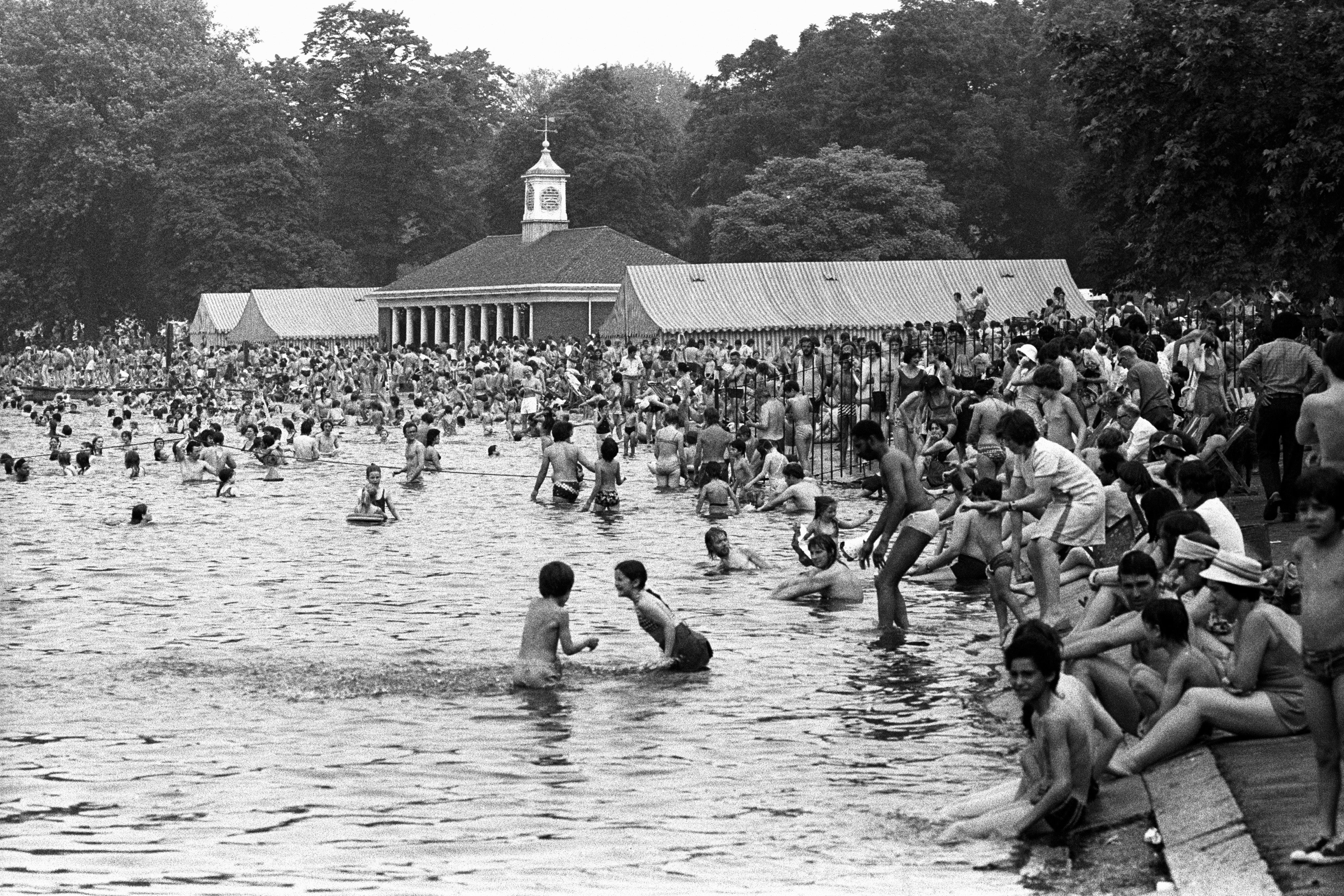Code Red: Why the coming heatwave will put even the freak summer of 1976 in the shade
The intense weather won’t last as long or be as dry as in that famed year, but it signals something far more ominous, experts say

Your support helps us to tell the story
From reproductive rights to climate change to Big Tech, The Independent is on the ground when the story is developing. Whether it's investigating the financials of Elon Musk's pro-Trump PAC or producing our latest documentary, 'The A Word', which shines a light on the American women fighting for reproductive rights, we know how important it is to parse out the facts from the messaging.
At such a critical moment in US history, we need reporters on the ground. Your donation allows us to keep sending journalists to speak to both sides of the story.
The Independent is trusted by Americans across the entire political spectrum. And unlike many other quality news outlets, we choose not to lock Americans out of our reporting and analysis with paywalls. We believe quality journalism should be available to everyone, paid for by those who can afford it.
Your support makes all the difference.Railway lines are melting, wildfires are raging, and ambulance services are said to be on the brink of collapse. The current heatwave is bringing chaos to the UK.
In a country where summer, as George II once noted, tends to be “three fine days and a thunderstorm”, forecasts that temperatures could smash the 40C barrier next week are enough to send a shiver down the spine. Metaphorically speaking, of course.
But how does this spell of searingly hot weather – so intense that the Met Office has now issued a red warning – compare with what has become the gold standard of hot UK summers: 1976?
That year, Brits struggled with droughts, standpipes in the streets, and a minister who urged married couples to save water by – wink, wink – bathing together. Are we now experiencing something that will put even that collective memory in the proverbial shade?
“This won’t last as long or be as dry as 1976,” says Professor Hannah Cloke, an expert in weather hazards, climate change and hydrology at the University of Reading. “But the problem is that, 46 years ago, that summer was a highly unusual event for a very localised area – the UK.
“The system we have now is much wider – it’s right across Europe – and, what is of more concern, it is far from unusual anymore. It is part of a pattern where these widespread extreme events are becoming more and more frequent.
“So, we are talking today about 40C being unprecedented here, but in a few years – as the effects of climate change become more pronounced – that just won’t be the case any more.”

Back in 1976 itself, there were an astonishing 15 consecutive days that saw the mercury reach 32C somewhere in the UK. On 3 July, the country’s highest ever temperature (at the time) was recorded in Cheltenham: 35.9C. Some parts of the South West went 45 days without rain.
So fierce was the heat that it was widely blamed for a 20 per cent rise in excess deaths that year, while the number of hospital patients suffering from sunstroke and heat exhaustion spiked. In a grim and perhaps unexpected effect, domestic violence also spiralled, with London’s Met Police dealing with 600 more cases each day than on average. Wildfires raged across Epping Forest in Essex and Bellerby Moor in North Yorkshire. Thousands of acres of crops failed.
Even Wimbledon – that one-time bastion of the British stiff upper lip – succumbed: officials made the once unthinkable decision that umpires would be allowed to remove their jackets (although similar laxities were not allowed in the House of Commons, where bar staff walked out after being told they must continue to wear their formal green livery).
Eventually, as it emerged that London had just 90 days’ worth of water left, a minister of drought was appointed by Labour prime minister Jim Callaghan. Dennis (later Lord) Howell urged people to stick to the government’s hosepipe ban, oversaw standpipes being installed in some streets (notably in much of Wales), and, famously, told reporters he had started taking baths with his wife. Then, a week after his appointment, it started pouring down.
Now, while the same level of disruption is not envisaged this summer, it should not, experts say, be seen as a sign that the intense weather is not equally problematic to that of four decades ago.
“We have better warning systems in place and are better at forecasting in 2022, so we are better able to prepare people about what’s to come,” says Professor Cloke. “Certainly, one would hope that you avoid the number of deaths associated with 1976.”
But, she says, none of us should underestimate the foreboding pattern of our increasingly hot summers. That such heatwaves are happening more often – 2003, 2006, 2018 and 2020 all saw sustained periods of intense heat – is climate change in action. The fact that 1976’s record temperature has been repeatedly smashed in the intervening years – most recently in 2019, when a high of 38.7 was recorded in Cambridge – is an entirely ominous phenomenon.
“As climate change continues, this will only get more extreme,” she says. “Hot weather on the one side, and floods on the other; and we are not a country with the infrastructure to cope with temperatures of 40C happening regularly or for days at a time. Once we begin seeing summers where that is not unusual, you are talking about disruption and droughts on a scale we’ve never known.”
Subscribe to Independent Premium to bookmark this article
Want to bookmark your favourite articles and stories to read or reference later? Start your Independent Premium subscription today.
Join our commenting forum
Join thought-provoking conversations, follow other Independent readers and see their replies
Comments